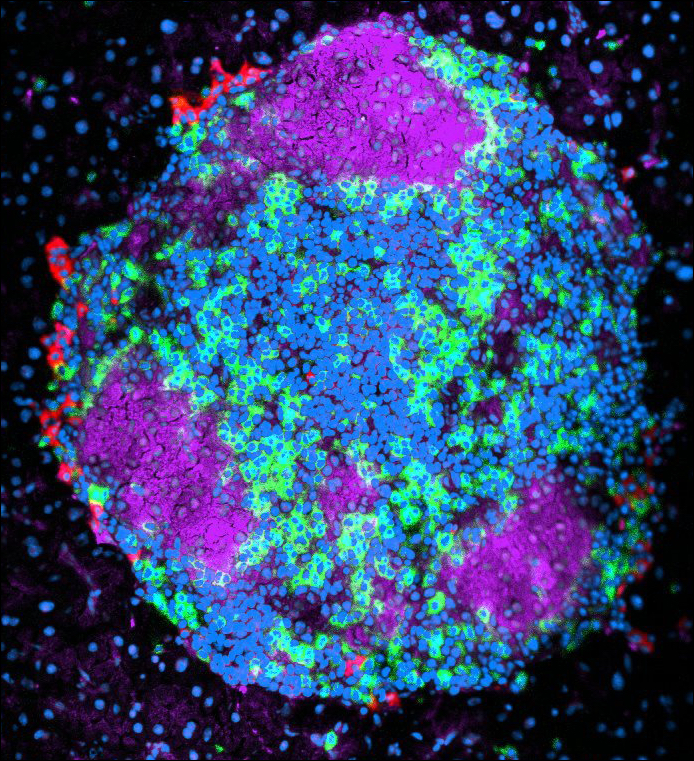Posted 6 July 2022

A team led by SVI’s Associate Professor Mark Chong, has been awarded a two-year grant from the Victorian Government’s new mRNA Research Acceleration Fund to push forward development of an Australian-first mRNA-based treatment for type 1 diabetes.
“Type 1 diabetes occurs when the body’s own immune system mistakenly attacks insulin-producing cells in the pancreas as if they were disease-causing organisms – pathogens,” says Mark. “Our aim is to use specific mRNA molecules to reprogram the immune system, changing the message from ‘let’s attack’ to ‘there’s nothing to see here, let’s move on’.”
The immune system identifies and destroys potential pathogens by recognising specific molecular markers, called antigens – or in the case of an autoimmune response, as in type 1 diabetes, ‘self-antigens’.
Mark and his team will build on recent developments in mRNA vaccine technology, with the goal of suppressing the immune response against self-antigens stemming directly from insulin-producing cells in the pancreas.
“Antigen-specific therapy is ideal for treating an autoimmune disease like type 1 diabetes, because it does not suppress the entire immune system,” Mark explains. “What we want to achieve is targeted ‘immune tolerance’ of a specific set of self-antigens, so the person’s immune system does not attack useful cells and remains otherwise functional – protecting the person against tumours and infection by pathogens.”
Without the ability to produce insulin to regulate their blood sugar levels, people with type 1 diabetes are dependent on replacement insulin, delivered by injection or pump, for the rest of their lives. Since its first use 100 years ago, insulin remains the only available treatment for type 1 diabetes – but it is not a cure for the disease.
“There is a clear, unmet clinical need for new, more effective treatments that go to the heart of the problem – the abnormal immune response – rather than just replacing insulin after the body has lost the ability to produce it,” says Mark.
The joint team that Mark will lead for this new project brings together scientists from SVI and the Monash Institute for Pharmaceutical Sciences (MIPS), including Professor Helen Thomas (SVI), Associate Professor Stuart Mannering (SVI), and Professor Colin Pouton (MIPS).
“Thanks to those scientists who identified the potential for, and have developed the use of, mRNA technology over the past 20 years, we now have new avenues for treatment,” says Mark. “Our team is very excited to see if mRNA technology can lead us to a new drug therapy for the millions of people worldwide who live with type 1 diabetes.”
Acknowledgements
We acknowledge the Victorian State Government for their support of this project through the Victorian mRNA Research Acceleration Fund. This research is also funded by philanthropic donations to the SVI Foundation.
About mRNA
Originally discovered in 1961, messenger RNA (mRNA) functions like a photocopy of part of a person’s DNA. mRNA provides instructions for creating a protein – and once used, these instructions literally self-destruct. It’s this ability to act and then disappear that has now been harnessed to develop new generation mRNA vaccines, such as those that protect against COVID-19.